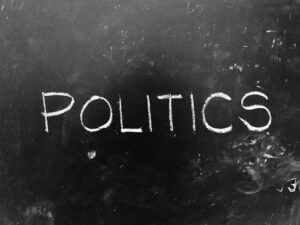The recent collapse of Silicon Valley Bank and Signature Bank is just the latest warning that Washington has long passed the point of prudent debt accumulation. Whatever President Biden hoped to achieve with his American Rescue Plan and deceptively named Inflation Reduction Act, the inflation produced by these budget-busting bills and subsequently required interest rates hikes have forced banks to adjust their lending to the devalued long-term bonds that capitalize them. And while most seem likely to avoid the fate of Silicon Valley and Signature, the banking system’s abruptly shrunken capacity to lend almost guarantees a recession later this year.
With prominent Democratic economists like Larry Summers and Jason Furman predicting further financial damage from continued government overspending, even progressives know they must be far more specific about how they would fund their agenda and stop relying on future deficits as a backstop. Already we are hearing far less from the left about Modern Monetary Theory—the belief that a country can comfortably live beyond its means in the long run—and a lot more about various income and wealth redistribution plans: raising the cap on capital gains taxes, imposing an annual wealth tax on high-net-worth individuals, hiking corporate taxes, taxing a company’s buyback of its own stock, eliminating the stepped-up basis on inherited assets, and treating unrealized capital gains as income.
What those on the left have yet to accept is that none of these schemes can produce anything close to the revenue they hope for. As twelve European countries learned when they hiked a variety of levies and fees on their highest earners in 1990, the targeted taxpayers either move away or reduce their investment activity to the point where overall government collections decline. These nations lost so much money, in fact, that by 2017 almost every one of the original wealth taxes had to be repealed.
Trying to impose higher taxes on corporations would prove no more fruitful, as U.S. firms can always move their respective headquarters to more lenient jurisdictions such as Ireland, as Eaton, Johnson Controls, and many others have already done. Last October, a number of governments tried to close that particular escape hatch, agreeing amongst themselves to a 15 percent minimum tax on corporate income, but found that too many other nations were unwilling to go along.
Sooner or later, those on the political left will have to adjust to the reality that the only way to fund new social programs without either increasing the national debt or imposing counterproductive taxes is by making existing programs operate more efficiently. Take public education, for example, where today’s budgets typically have no relationship to student performance. Compared to the rest of the world, the U.S. spends the fifth-highest amount per pupil ($612.7 billion annually), yet its students consistently rank average to below-average on international tests of math, science, and reading.
Government-funded healthcare is another area where public money is massively squandered. According to former Louisiana Governor Bobby Jindal, who now serves on the board of LifeMD, at least $150 billion is wasted each year on excessive or unnecessary medical procedures. And the global management firm McKinsey and Company says Medicare and Medicaid could easily raise another $150 billion with simple data management techniques that better identify fraud.
Wringing efficiencies from existing public programs may not be what most liberals currently think of as the best way to fund new social programs, but at a time when our debt-laden economy leaves little alternative there are good reasons to believe that many Democrats will come to accept it. In the first place, paying for new services by streamlining old ones is not a completely alien idea to the left. In the 1950s, British Labor Party politician Anthony Crosland and many of Europe’s first social democrats insisted on regular performance audits of existing public programs. They believed that consistent restructuring was needed to keep their countries’ bureaucracies responsive to the needs of the average citizen while at the same time providing cash-strapped post-war governments with funds for new programs.
Secondly, most left-leaning voters in the U.S. have a history of responding favorably to cost-effective reforms that are perceived as service improvements. Take the growing popularity of school choice programs, which subsidize families to educate their children in a variety of placements with budgets that are a fraction of the local public school per pupil cost. Although typically enacted by Republican governors, polling shows that school choice is now favored by two-thirds of Democrats nationwide.
Surveys show similar liberal support for continuing efforts to shift Medicare and Medicaid funded surgical procedures from hospitals to outpatient service centers. Although initially controversial when adopted as an experimental cost saving measure under President Ronald Reagan, the practice has long ceased to be a contentious political issue.
There is unfortunately one faction on the left that will not take well to what historian Simon Heffer has called the coming “Great Government Jobs Audit,” and that is government workers themselves, especially the leaders of their unions. And not just because less competent public employees would likely be reassigned, paid less, demoted, or dismissed, this last leaving the proceeds from union member dues considerably reduced.
Many public sector leaders have become greatly attached to the political power that has resulted from decades of lax oversight. Their power is typically disguised by jargon-laden rules and procedures, but strong enough that American Federation of Teachers president Randi Weingarten could keep U.S. schools locked down during the pandemic and Anthony Fauci could subsidize illegal genetic research at China’s Wuhan lab, then cover his tracks with a phony scientific study.
How will public sector leaders try to preserve their fiefdoms against the coming era of cost-effective liberalism? Already we can see efforts to turn popular environmental legislation into schemes for preserving an unnecessarily large government sector. New York’s twenty-two-member Climate Action Council, for example, has just published its “Scoping Plan,” which would commit the state to creating 300,000 emissions control jobs, regardless of what technologies are actually adopted.
It is also not a coincidence that public unions have become vocal supporters of Critical Race Theory (CRT), or so-called “woke” ideology. Although ostensibly doing so in the name of racial and gender equity, teachers unions are already using CRT’s moralistic denigration of objective standards—supposedly a tool of the white patriarchy—to resist having members judged by their students’ test scores, graduation rates, and other rigorous metrics.
For many decades, blue states and the federal government have put off the hard task of responsible budgeting—squeezing bloat from costly public programs, discarding the ineffective practices, and rooting out corruption—by racking up ever larger deficits. But as recent bank failures demonstrate, their ability to continue doing so without triggering a serious financial crisis has come to an end.
The inevitable result will be a growing split, not between left and right, Democrats and Republicans, blue and red states, but within the left itself. In other words, between what we might call “Main Street liberals”—everyday citizens who want government to play a constructive role in running society—and those public sector unions that for more than half a century have only pretended to prioritize that goal.





